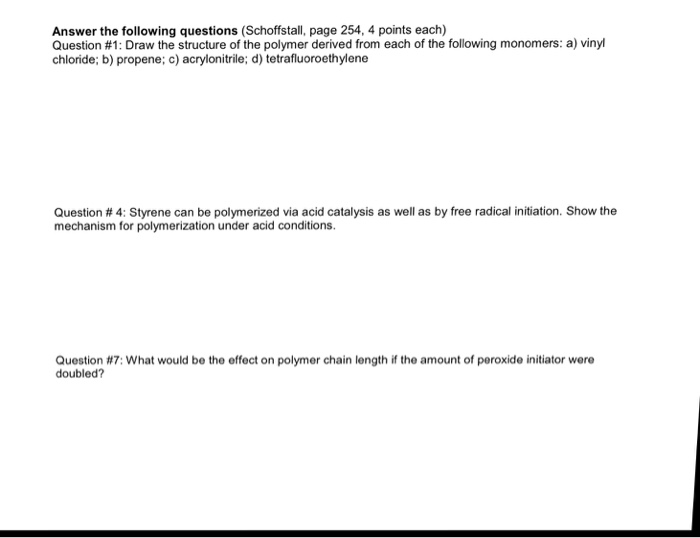Vinyl acetate is used to make other industrial chemicals.
Vinyl chloride monomer structure.
Polyvinyl chloride is produced in an addition polymerisation reaction from chloroethene vinyl chloride monomers.
In the early 1970s the carcinogenicity of vinyl chloride usually called vinyl chloride monomer or vcm was linked to cancers in workers in the polyvinyl chloride industry.
If generated an inchi string will also be generated and made available for searching.
Vinyl chloride monomer vcm is prepared commercially in two processes based on different two carbon hydrocarbons.
Vinyl chloride is used primarily to make polyvinyl chloride pvc.
It is a clear colorless liquid with a sweet fruity smell.
The balanced process is based on ethylene and the carbide process is based on acetylene.
Vinyl chloride is primarily used to make polyvinyl chloride to manufacture plastics.
The monomer chloroethene or vinyl chloride has a boiling point of 14 o c 259k so it is a gas at room temperature and pressure.
Pvc is used to make a variety of plastic products including pipes wire and cable coatings and packaging materials.
Vinyl chloride is an organohalogen compound that has important industrial applications.
Goodrich plant near louisville kentucky were diagnosed with liver angiosarcoma also known as hemangiosarcoma a.
It is a carcinogenic gas that must be handled with special protective procedures.
Vinyl acetate is an industrial chemical that is produced in large amounts in the united states.
Suspension and emulsion polymerization of vinyl chloride monomer using free radical initiators.
Vinyl chloride ch 2 chcl is most often obtained by reacting ethylene with oxygen and hydrogen chloride over a copper catalyst.
Vinyl chloride is a chlorinated hydrocarbon occurring as a colorless highly flammable gas with a mild sweet odor that may emit toxic fumes of carbon dioxide carbon monoxide hydrogen chloride and phosgene when heated to decomposition.
It is very flammable and may be ignited by heat sparks or flames.
When treated with certain catalysts vinyl chloride monomers undergo polymerization and form the larger compound known as polyvinyl chloride or pvc.
About 13 billion kilograms are produced annually.
Vinyl chloride is also produced as a combustion product in tobacco smoke.
This information is only displayed if the substance is well defined its identity is not claimed confidential and there is.
The molecular structure is based on structures generated from information available in echa s databases.
Under pressure the gaseous chloroethene molecules are forced closer together to form a liquid.

